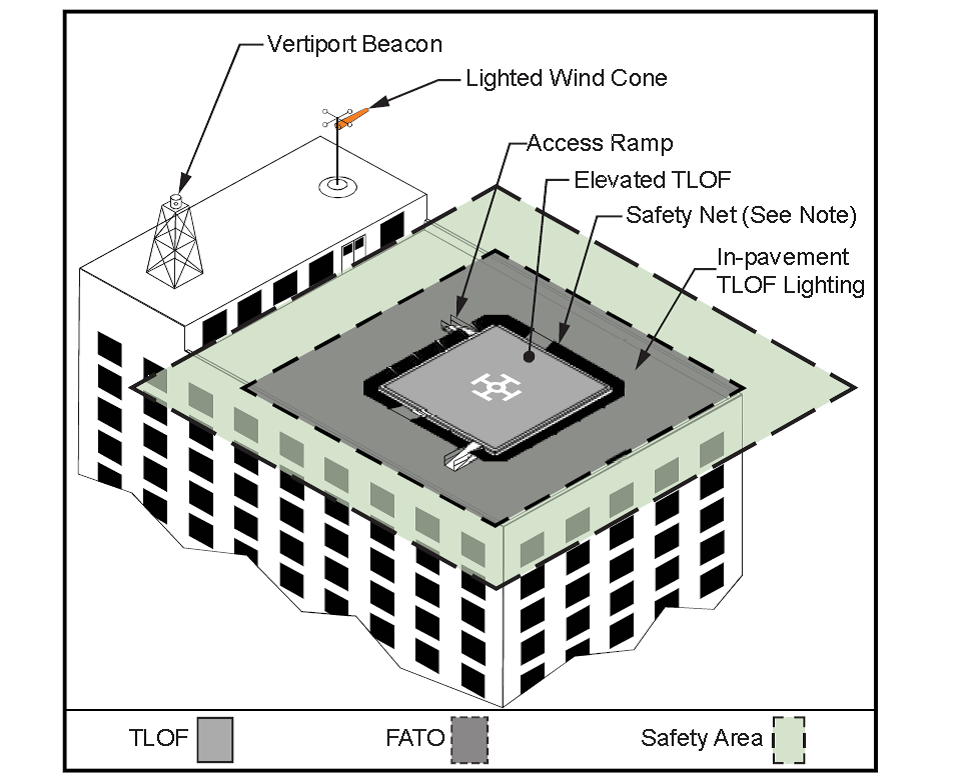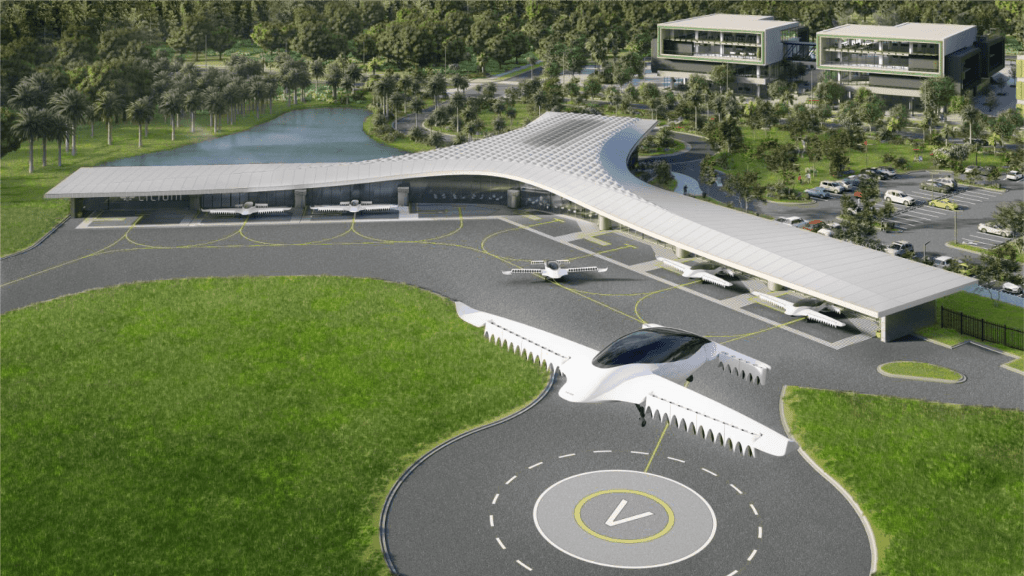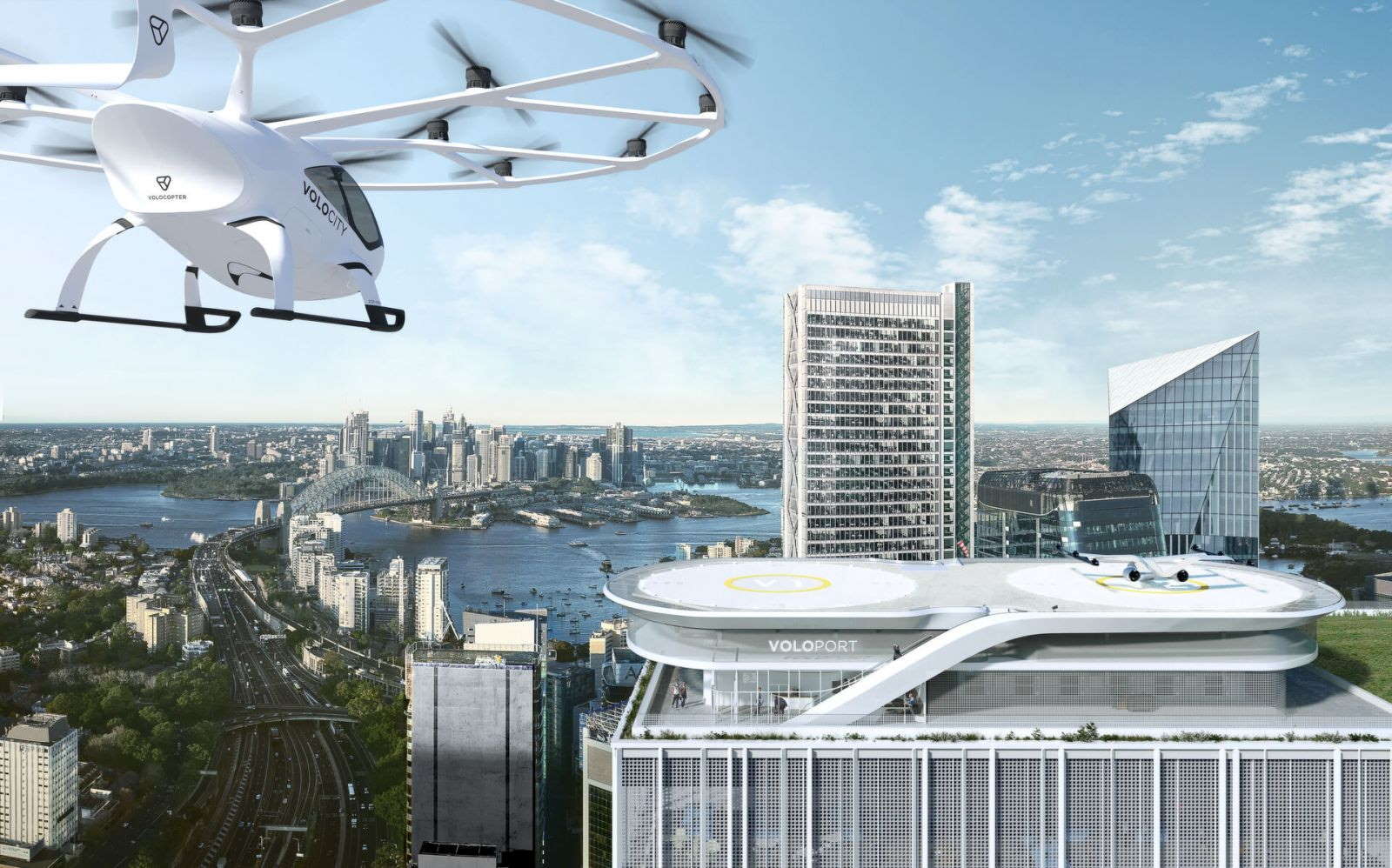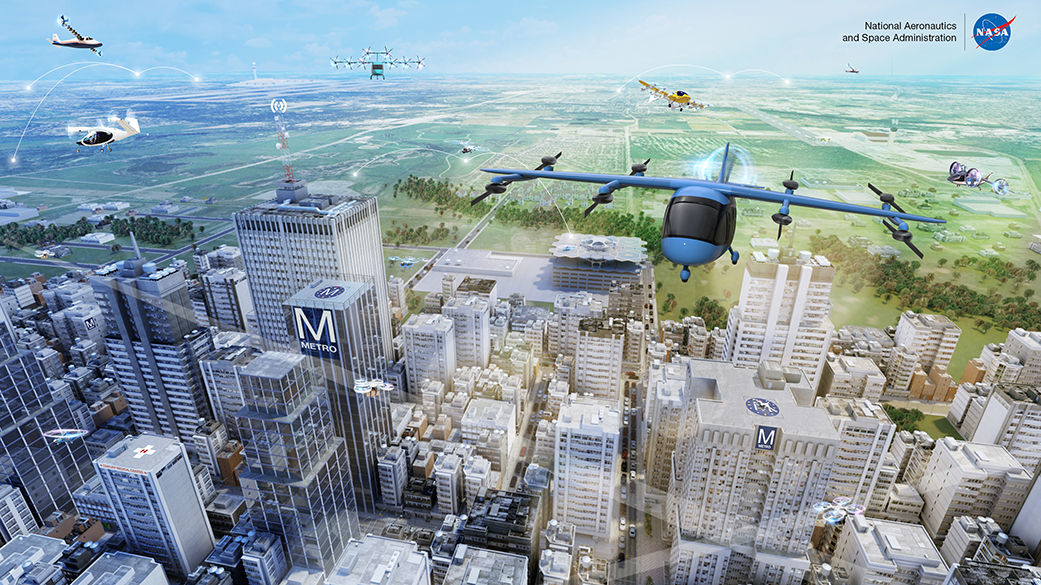


In an ambitious step towards Urban Air Mobility (UAM) , FAA has released it's Draft guidelines on the 'Vertiport' Design , that will help the Owners , operators and stake holders of these upcoming infrastructure , that will define the shortest mode of air travel in the future.
Vertiport - An area of land or a structure, used or intended to be used, for electric, hydrogen, and hybrid VTOL landings and takeoffs and includes associated buildings and facilities.
Vertistop - An area similar to a vertiport, except that no charging, fueling, defueling, maintenance, repairs, or storage of aircraft are permitted. The design standards and recommendations in this Engineering Brief (EB) apply to all vertiports and vertistops.

Picture Courtesy : Lilllium
FAA’s initial interim guidance specifies design guidance for vertiports and vertistops, including modification of existing helicopter and airplane landing facilities and establishment of new sites.
Although the design guidance contained in the Engineering Brief (EB) refers to vertiport design, the design guidance applies to both vertiports and vertistops where apposite.
FAA says,
This Engineering Brief provides interim guidance to airport owner operators and their support staff for the design of vertiports for vertical takeoff and landing (VTOL) operations. Note that this interim guidance will be subject to updates as data, analysis, and VTOL aircraft and operations develop in the future.

Picture Courtesy : Volocopter
However FAA wants to be bit of cautious and wants to watch the industry developed,
The emerging VTOL aircraft and industry advanced air mobility (AAM) concepts of operation are yet to be proven to perform like either of these designs or operational templates. Additionally, because VTOL aircraft and the AAM industry are rapidly evolving, there is limited demonstrated performance data on how these aircraft operate.
We can expect an Advisory Circular (AC) in this regard in future,
Research efforts are underway to better understand the performance capabilities and design characteristics of emerging VTOL aircraft.
The FAA will develop a performance based AC on vertiport design in the future that will detail categories of vertiport facilities requiring different design criteria depending on the characteristics of the aircraft they plan to support and activity levels at the facility.

Picture Courtesy - NASA .
In this EB , FAA also talks about the VTOL aircraft using alternative fuel sources such as hydrogen and hybrid , which will use theese vertiports and future AC will have mention of it.
FAA expects future EB revisions to include aircraft that do not currently conform to the composite aircraft included in this EB ; for example, aircraft with MTOW over 7,000 pounds, and address instrument flight rules (IFR) capability.
In the absence of a certiied VTOL aircraft , FAA has used a Composite Aircraft - the design characteristics, performance, and operating conditions of nine VTOL aircraft currently in development , to define this interim safety solution and guidelines for the Vertiport.
Composite Aircraft
The composite aircraft represents a VTOL aircraft that integrates the performance and design features of nine VTOL aircraft currently in development. This composite aircraft is used to specify the performance and design characteristics for the purposes of vertiport design in this EB.
.png)
Picture Courtesy - FAA .
FAA says , there will be such requirements of prior approval and licensing and in some cases there will be targetted financial assistance from competent authorities
Many state departments of transportation, aeronautics commissions, or similar authorities require prior approval and, in some instances, a license to establish and operate landing facilities.
Several states and municipalities administer a financial assistance program like the federal program and are staffed to provide technical advice. Those seeking to establish a vertiport should first contact their respective state or local transportation or aeronautics departments or commissions for specifics on applicable licensing and assistance programs.
► Appropriate FAA regional or district office should be contacted prior to the submission of FAA Form 7480-1 for the purpose of the development on non-federally obligated airports or heliports or for non-federally funded stand-alone vertiport sites, and in compliance with 14 CFR Part 157.
► For vertiport development on federally obligated airports, the infrastructure or equipment must be depicted on the Airport Layout Plan (ALP) and a Form 7460-1 submitted for an airspace determination prior to development.

Though detailed dimensions and criteria can be found in the FAA - EB / Engineering Brief No. 105 - Vertiport Design , the brief of landing area design and geometry , that includes the TLOF, the FATO, and the Safety Area is as below.
.png)
Picture Courtesy - FAA .
Touchdown and liftoff area (TLOF) : The TLOF is a load bearing, generally paved area centered in the FATO, on which the aircraft performs a touchdown or liftoff.
Final approach and takeoff area (FATO) : The FATO is a defined, load-bearing area over which the aircraft completes the final phase of the approach, to a hover or a landing, and from which the aircraft initiates takeoff.
Safety Area : The Safety Area is a defined area surrounding the FATO intended to reduce the risk of damage to aircraft accidentally diverging from the FATO.
Lighting is required for vertiports that support night operations. The lighting should enable the pilot to both establish the location of the vertiport and identify the perimeter of the operational area.
.png)
Picture Courtesy - FAA .
